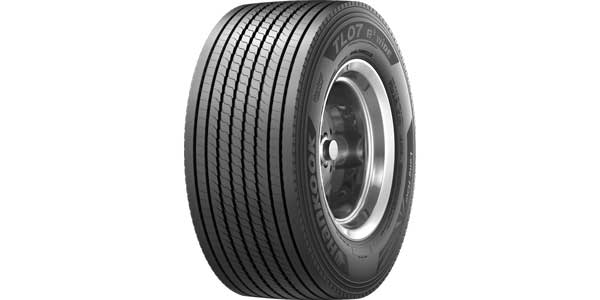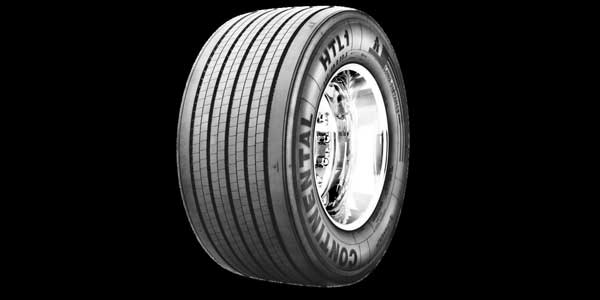If you run a fleet in a weight-sensitive application, you might want to consider wide base tires. A 2015 report from the North American Council for Freight Efficiency found that wide base tires intended for the over-the-road line-haul market will save significant amounts of fuel when compared to tires that are not designed for low rolling resistance. But the tires are more expensive, so first you need to be sure that they make sense for your fleet.
“Wide base single tires came into play in the early 2000s, and are especially useful for fleets that are weight-sensitive and want to increase payload (fleets that gross out before they cube out),” notes Sharon Cowart, product marketing director for Michelin Americas Truck Tires. Cowart explains that with the weight savings offered by the wide base Michelin X One tires, a truck fleet can carry more than 700 lbs. (aluminum wheel vs. aluminum wheel) or more than 1,300 lbs. (steel wheel vs. aluminum wheel) per vehicle with the X One in both the driver and trailer axles. This means more weight available for payload.
“Ultra wide base tires help fleets increase carrying capacity, and enable trucks to add more freight which allows fleets, especially fuel and bulk haulers, to be more efficient with their resources and maximize routes,” Bridgestone’s Nayakwadi says. “Bridgestone ultra wide base tires, like our recently launched Greatec M835A Ecopia and Greatec R197 Ecopia are lighter than two standard assembles, allowing fleets to carry increased freight loads, especially when used with aluminum rims across a tractor trailer. Ultra wide base tires can also be retreaded, helping fleets more effectively manage tire assets long-term and lower total cost of tire ownership.”
“When changing from a conventional dual tire configuration, fleets can expect to see weight savings,” notes Helmut Keller, head of brand and product management for Continental Commercial Vehicle Tires the Americas.
Wide base tires, by design, also reduce rolling resistance due to less drag force compared to dual wheel assemblies. This leads to increased fuel efficiency for the vehicle. It is often easier to maintain inflation pressure on a wide base tire than on dual assembly tires. Many drivers and maintenance personnel miss checking the inflation pressures on inside dual assemblies, due to the difficulty of locating the air valve. Due to this lack of maintenance, variations in inflation pressures between inside and outside dual assembly tires can cause irregular wear, which then sometimes leads to early tire removal. A single wide base tire provides easier access to the air valve, assisting fleets in maintaining correct inflation pressure, which then reduces tread wear and extends the life of the tire.
“Fleets are often initially concerned about the stability of a wide base tire versus a traditional dual tire assembly, for example in the case of a roll-over,” Keller continues. “However, the track width, the parameter that controls the stability of the drive and trailer axles, is not negatively affected by a change to a wide base tire. Track width is measured from the center of a wide base tire or the center of a dual wheel assembly. A dual assembly with a 77.5-in. axle has a track width of 77.5-in., while a wide base tire with an 83.5-in. axle has a track width of 83.6-in. In addition, wide base tires increase inside clearance—another benefit for fleets where inside clearance can improve payload.”
The most important aspect of tire maintenance for all tires is inflation, but this is even more important with a wide base tire due to the load it carries.
“Maintaining proper inflation within each wide base tire will reduce tire-related costs to a fleet by decreasing irregular wear, fuel consumption and breakdowns, and increasing vehicle handling, tread life and uptime,” adds Keller. “Continental offers the ContiPressureCheck tire pressure monitoring system to alert drivers if low pressure or high temperature is recorded in a tire. This can help eliminate time spent on manual pressure checks, and ensure the safety and optimal performance of the tire. Pulling wide base tires from service at 6 to 8/32-in. of remaining tread depth will increase the likelihood that the casing can be retreaded.”
Looking for more tire info? Click here to get the full breakdown on tire value.















